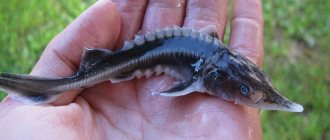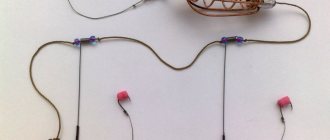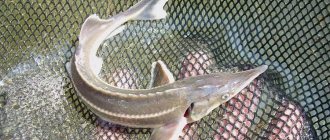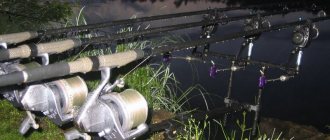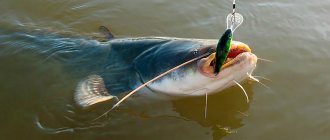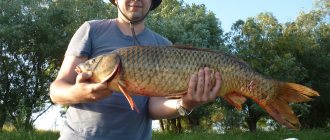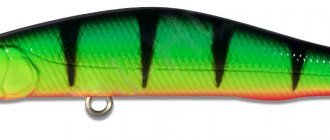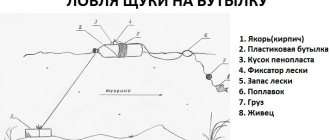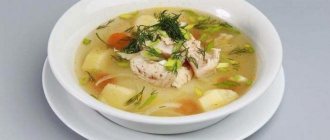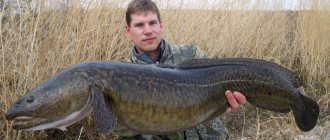- Published 18 June 2015
- We are always very glad to see your likes and comments!!! We are waiting for you on our channel: plclip.com/user/BigFishingChannel Vkontakte: vk.com/bolshayaribalka Our fishing portal: bolshayaribalka.ru Fishing forum: bolshayaribalka.ru/forum/ We invite you to watch an interesting video about how you can catch a sterlet with a rubber band . Of course, if you come across a sterlet on your bottom or other gear, then it is imperative to release it back into the river. According to the fishing rules, sterlet is protected by law, and fishing for it in most reservoirs of our country is prohibited!!! And yet, in some cases, when fishing, the sterlet bites on the feeder. There were also cases when, when fishing, there were bites from sterlet even on the most ordinary float rod. It follows from this that sterlet is caught from time to time on a wide variety of fishing gear. This could also be fishing for sterlet on a donk, because making the necessary equipment, which will then be used to catch sterlet, does not require any great effort. In this video, a sterlet is randomly caught on a bottom tackle called a rubber band. Or, you can also call it a donk with a rubber shock absorber. The sterlet was caught on an elastic band while fishing for sabrefish, and the fishing took place with such a common bait as maggot. Of course, a donkey for sterlet can be of any design, but in our case it was a donkey with a rubber shock absorber. The action in the video takes place on one of the sandy beaches of the Vyatka River. As far as I know, fishing for sterlet on Vyatka is also prohibited, for this reason the author of the video, after catching this small sterlet, immediately released it back into the Vyatka River. The sterlet caught on the donk was quite small, weighing only about three hundred grams. Such a small sterlet is also called shilse among fishermen. This name stuck because the small sterlet looks very much like an awl. In general, of course, when bottom fishing, sterlet is caught quite often near steep, steep, clay banks. But just as often, sterlet can be caught on sand spits along which it rolls downstream. Most often, in the same Vyatka River, sterlet does not reach a particularly large size. Usually the weight of sterlet that may end up in a fisherman’s catch does not exceed five hundred grams. Although, there are known cases when a sterlet weighing more than three kilograms was caught on the hook of a bottom tackle. For sterlet on the Vyatka River.
- Catching sterlet video sterlet video donka on sterlet catching sterlet on donka catching sterlet on Vyatka with an elastic band
plclip.com
Tackle for catching sterlet
Sterlet is caught with bottom gear - ordinary donkey hooks, rubber bands or carp rods. The requirements for their equipment are, in principle, the same. And sterlet is not particularly picky and can be caught even with rough equipment. But still, it is best to use exactly the kind of equipment that is just strong enough to fish for sterlet.
Line and leash . To catch sterlet, a fishing line with a diameter of 0.3 mm is used. Such a fishing line can withstand even a large sterlet, because this fish does not offer much resistance. The leash used is slightly thinner - 0.2-0.25 mm.
Hook . When catching any fish, try to use a reliable and high-quality hook. When fishing for sterlet, the hook must be checked and sharpened. The optimal hook number for sterlet is in the range No. 5-7. The handguard can be used either long or short, it doesn’t really matter and here you need to be guided solely by your preferences.
Cargo .
Since fishing takes place in the current, the sinker must be heavy enough so that it does not drift down the river. Choose a flat sinker weighing 50-100 grams. Such a sinker holds the tackle in place better and, when removing the tackle from the water, will be less snagging, since a flat sinker, when pulled up, does not stretch along the bottom, but hovers a few tens of centimeters from it.
Sterlet cutting
Using movements directed away from themselves, they cut off the fins of the fish. If you are going to cook the whole sterlet, you need to remove the gills. If the head is not needed for cooking, it is recommended to remove it completely. Then, if necessary, you can cut the sterlet into portioned pieces.
For fillet
First clean the scales and remove the skin. To fillet sterlet along the ridge, it is necessary to make longitudinal cuts. Then the cartilaginous formations resembling a spine should be removed. Cut the carcass in half.
For stuffing
To prepare stuffed sterlet, do not remove the skin. The back part must also be preserved, so the “bugs” cannot be cut off. In this case, scales must be removed using boiling water. The carcass is placed in boiling water for 3-5 minutes; At the same time, the skin will lighten, after which it will be easy to remove it. To get rid of the “bugs”, you will have to slightly squeeze each of them, then turn them around an axis: this method allows you to easily remove the part of the fish that is unnecessary for cooking. A circular incision is made near the head, and the skin is pulled together with a stocking in the direction of the caudal fin.
It is necessary to thoroughly rinse the fish from the inside. In addition, the poisonous vizig should be removed.
What to catch sterlet with
Of course, for catching any fish, not just sterlet, it is very important to choose the right bait. For sterlet, you can use the following bait with great success:
- crawl out;
- earthworm;
- muckworm;
- maggot;
- live bait
It is best to catch sterlet with a worm, since there will be more bites of sterlet on a worm than on live bait. Only large sterlet are caught using live bait, so sometimes you have to wait a long time for a bite on such bait. The size of live bait for sterlet should be within 3-5 cm. And maggots most often act not as independent bait, but as an addition to the worm.
The type of worm practically does not matter. It can be either a crawler, a dung worm, or an earthworm. It is advisable to place one worm on the hook; this will be quite enough for catching sterlet. Anglers usually do not bait the worm with a stocking, but pierce it in several places, obtaining such a wriggling bait.
If using crawlers, choose these medium-sized worms. Although the sterlet’s mouth is quite large, fishing with medium-sized worms is still more effective.
Removing vizig through the tail
Not every fisherman or housewife knows what sterlet viziga is. This part must be disposed of before cooking: it contains substances that are toxic to the human body.
It is easy to get rid of by making an incision in the area of the caudal fin. To do this, you need to cut off the tail fin using a sharp knife or culinary scissors. After this, you should pry off the white vizig with a thin blade or large needle. Then you need to pull out the poisonous organ. You can use pliers for this. Movements should be careful and smooth.
If the vizig was damaged during removal, the poisonous contents leaked out, it is necessary to thoroughly rinse the meat.
Using two cuts at the head and tail
The poisonous organ can also be removed using paired cuts at the head and tail.
You need to thoroughly rinse the inside of the carcass using running water. In this case, blood clots should be removed. Then, with a sharp thick blade, you need to cut the head and tail of the sterlet on the vertebral cartilage. After this, you should carefully remove the vizig, trying to avoid damaging it.
Where to catch sterlet
Well, of course, without knowing the promising fishing spots, you can’t count on a good catch of sterlet. But if you know the principles of finding good places for fishing for sterlet, then you can find a good place for yourself and regularly go there to catch sterlet.
Of course, it is quite difficult to clearly determine the place where sterlet fishing will be successful, and each angler keeps such places a secret from others. The fishing location will be influenced by both the time of year and the water level in the river. Now we will find out under what conditions where to look for sterlet.
First of all, when fishing for sterlet in an unfamiliar place, you must find a hole in the river. If you find a hole, you should find a way out of it. Set up your fishing spot just opposite this spot. Sterlet usually moves within a day from a hole to shallow water, but here you will have 2 in 1. When using several gears, you will be able to fish both promising areas at once, thereby increasing your chances of biting a sterlet.
If we talk about catching sterlet in spring or summer, then whether the sterlet is closer or further from the shore may depend on the water level in the river. When the river bed is overcrowded and the water level is high, the sterlet can come very close to the shore in search of worms and various larvae washed up from the shore soil. At such times, sterlet is sometimes caught even on a float fishing rod.
And on the contrary, when the water level in the river is low, the sterlet moves further from the shore and settles in holes, waiting until the water level rises and returns to its usual state.
In autumn, sterlet does not approach the shore even during high water and tries to stick to the holes all autumn. Only occasionally, as an exception, this fish can be found in September-October not far from the coast.
When the water level is normal or there is a decline, the sterlet usually stays at a distance of 50-100 meters from the shore, and during high water it approaches the shore by 25 or even 10 meters.
In search of food, sterlet often stops at the border between fast currents and standing water. In such places she can always find something to profit from, because larvae, insects or worms that escape from the current often settle here.
In areas without a current, you should not look for sterlet, because it never moves a significant distance from the water flow and if it approaches standing water, it stays exclusively at its border with the flow.
Sterlet usually comes out to the shallows in the mornings, and in the late afternoon returns to the pits. But when entering the shallows, the sterlet never approaches close to the shore, preferring shallows located no closer than 40 meters from the coastline, and optimally up to 100 meters.
It is very important to know that sterlet lives in flocks, so several specimens are often caught at once. If one sterlet bites, it is advisable to return the tackle to the same place as quickly as possible and carefully monitor other tackles. If a sterlet approaches them, a bite will definitely follow, because the sterlet willingly swallows any bait lying on the bottom suitable for catching it.
Natural enemies of sterlet
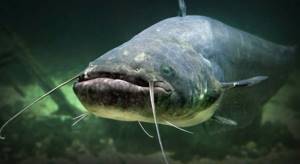
Since the fish lives mainly on the river bottom, it remains invisible to most predators, who prefer to stay at medium depths. The sterlet has practically no one to fear, and even in the event of an attack, its bony plates located throughout its body can protect it from bites.
Interesting: Can sharks sleep?
And if nothing threatens adults, then fry and eggs cannot feel safe. They often become food for sturgeon, pike, burbot, pike perch and catfish.
This species is also susceptible to various diseases, which is why it prefers clean water, where the likelihood of infection is minimal. Sterlet often encounters the following diseases:
- saprolegniosis;
- gill necrosis;
- gas bubble disease;
- myopathy.
Therefore, during artificial breeding, a person carefully monitors the created conditions.
When to catch sterlet
Sterlet fishing begins in early spring and ends in late autumn. In winter, the sterlet goes into holes up to 25 meters deep and behaves very passively, with virtually no movement. Catching sterlet in winter is largely impossible, since the fish does not respond to bait and hardly feeds throughout the winter. Although rare cases of sterlet being caught in winter do occur.
Active fishing for sterlet begins after its spawning, which usually takes place in late spring. After the water level in the river begins to subside, the migratory sterlet begins to migrate to the lower reaches of the rivers, and only the sedentary, local sterlet remains, which lives and spawns in its chosen territory and does not leave it.
Sterlet is caught around the clock. Its maximum activity is observed at night, but in the morning, afternoon and evening the activity of the fish decreases insignificantly. And in many regions, night fishing for sterlet is prohibited and sterlet fishing can only be done during daylight hours, from morning to evening.
Night fishing for sterlet is most effective in the summer, and in spring and autumn the activity of the fish is the same throughout the day, and sometimes even higher during daylight hours, when the water is warmer.
All summer, after spawning, sterlet can come closer to the shore, where it can be successfully caught with a donkey or with a so-called elastic band. The probability of finding a sterlet less than 30 meters from the shore is very high in warm weather and high water levels. And in the fall it can only be found in deep holes or at the exit from them further from the shore, at a distance of at least 60-70 meters.
rybkolov.ru
Features of character and lifestyle
Sterlet is a predator that settles in reservoirs with clean water. Sometimes individuals can go to sea, but they always return quickly. In the warm season, the fish swims in shallow water, but with the onset of cold weather it moves away from the shore to greater depths and looks for holes and ravines for wintering. Uninvited guests will not find it there, and the fish will be safe.
In winter, sterlet becomes inactive. She spends all her time in the hole she finds and does not go out hunting. Her body falls into a state of suspended animation, which is why it does not need to regularly receive food. With the onset of spring, when the ice on the surface of the river melts, individuals begin to move a lot and go upstream to spawn.
Description and behavior characteristics
Before you start talking about more significant points regarding fishing, you need to know what a sterlet looks like and what behavioral features it has. First, let's start with the external description.
You can recognize it by its long nose, which is different from other fish. The nose has a sharp end, and short antennae are located around it. Pay special attention to the mustache. They reach all the way to the mouth. The body is not covered with scales, but on the surface of the body you can find brushes, which are bone growths.
In appearance, the growths appear in the form of rows located along the body. She has only 5 such rows. You can see one row along the entire length of the back. There are also 2 rows along the side parts of the body. You can find 2 more rows along the abdomen. In fact, a kind of shields are formed on the surface of the brushes, which are quite sharp.
Speaking about color, one can talk endlessly. The color of a sterlet can be completely different. The color primarily depends on the environment in which it is located and where it lives.
As a rule, individuals with a brown back are often found, but the belly appears to be a pale yellow color. In size, the length reaches from 50 to 60 cm. Weight, as a rule, is from one and a half to two kg. Of course, there are exceptions here - longer and heavier individuals.
As for behavioral characteristics , one cannot fail to note nutrition, the process and characteristics of reproduction, spawning, behavior during feeding, and lifestyle.
Speaking about nutrition, it cannot be mentioned that this type of fish is, as a rule, lovers of worms, insects and larvae. Sometimes, they can eat the eggs of other inhabitants of the reservoir. Unlike others, sterlet has early puberty.
Females can begin breeding at a fairly early age - from 5 to 8 years. Males begin their breeding at the age of 4 to 5 years. The spawning process usually begins in April and continues until the first days of June. Approximately each female is capable of laying from five to twenty thousand small eggs.
In the evening or at night, the fish begin to float to the top of the water. During this period, the fish hunt begins. Hunting occurs in this way: the fish turns over on its back and begins to catch insects with the help of its mouth. As soon as dawn comes, the fish goes deeper and stays there until the next dusk. The lifestyle of this fish is quite quiet and cautious.
Sterlets usually live at great depths. In winter, you can find sterlet in the depths of reservoirs, and sometimes they simply go into hibernation.
What does a sterlet eat?
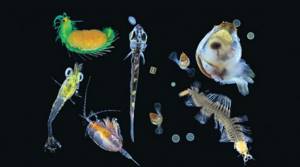
Young individuals eat plankton and small aquatic organisms. They move along the bottom and collect everything they can eat with their mouths. In this they are helped by the antennae, located on the upper jaw and serving as sensors for detecting edibles.
Interesting: Inhabitants of the Red Sea - list, photos, videos, names and descriptions
As fish grow older, their diet changes slightly and depends on gender. Since males swim at medium depths, they hunt small fish. Females, who spend most of their time at the bottom, eat marine insects, worms, small crustaceans and eggs of other fish.
Despite the fact that the sterlet is considered a predator, it prefers to choose smaller prey. She goes out to hunt at night or in the dark.
Interesting fact : unlike many fish, sterlet does not have cannibalism. Adults do not attack young animals and do not eat their own eggs.
Habitats and biting calendar
To catch sterlet in many places you need a license.
Where can you find sterlet? Sterlet can be found in the following seas:
- Sea of Azov.
- Caspian Sea.
- White Sea.
- Kara Sea.
- Barencevo sea.
- Black Sea.
In addition, you can find it in the Volga basin . It is possible that habitats may be found in Lakes Ladoga and Onega. You can also find sterlet in the Yenisei and Irtysh . The habitat of this fish is absolutely possible from the Rostov to Tula regions. In the Kuban you can also find this fish.
Some features worth noting:
- It mainly moves along the bottom of the reservoir.
- With the onset of darkness, it floats to the surface of the reservoir to hunt.
- This fish loves to be in those rivers where high current speed prevails.
- In addition, fish love cool and purified water.
- In places where there is a large amount of branches and sand, you can also find sterlet. The biting calendar is an important and integral part of every angler.
In order for your fishing to bring you pleasure and decent results, you need to use and take into account this calendar. The first thing worth noting is that sterlets swim exclusively in schools. That is, there is a very small chance of meeting her alone.
In winter, as a rule, you can’t wait to catch this fish. After all, it goes into hibernation, and in exceptional cases you can find it in corners where the current reaches a depth of more than 25 meters. During this period, it is very difficult to get the fish out of a stationary position.
From the beginning of spring to the end of autumn, the fish spends time in warm water.
How to catch sterlet?
Of course, for your fishing to be successful, you need to know several features related to catching this fish. As you already understand, each fish has its own character and behavior. All this certainly needs to be known and taken into account when fishing.
Let's figure out how to catch sterlet and which technique is best suited for this.
Donk fishing technique
Of course, opinion agrees that it is with this gear that you can fish and get a good catch. It is recommended to use this tackle initially in the summer.
If you are faced with the choice of a donkey, then choose one with shock absorbers made of a rubber base. This method is effective. During the fishing process, there is no scaring of fish and this is important for fishing. So, now let's take a closer look.
Equipment included:
- Coil. The reel is quite a suitable option. It is with the help of it that we will be able to make long casts. It is worth noting that fishing will be quite easy.
- Fishing line. Such an attribute as fishing line is suitable for absolutely any color. The fish is not shy and this will not affect it in any way. Even the thinnest fishing line will do.
- Leash. It is recommended to use a leash when fishing, the length of which is from 20 to 40 cm. The best option would be to use a permanent or removable leash.
- Sinker. When choosing a sinker, you must first take into account what you will be fishing on. It is very important to know which bottom of the reservoir is overgrown or not. Be sure to remember such features as flow speed.
- Hook. When choosing a hook, choose hook number 5, 7. It is recommended to install no more than five hooks at a time.
On a float rod
In fact, you can catch quite a lot of fish using this technique. As noted earlier, sterlet is calm in nature and fishing with a fishing rod will occur without any obstacles.
Equipment included:
- You can use completely different types of fishing line.
- It is best to purchase a fishing rod that is long and durable in its composition.
- When choosing a reel, opt for an inertial type reel.
- It is permissible to use small and thin hooks. It is permissible to install two hooks on one fishing rod.
- It is best to choose a thin leash to avoid tangling with the fishing line.
- It is best to fish near the shore using float tackle. Activity will begin during the daytime.
Spinning
This method is suitable for the autumn period , when the cold has already set in. This method is relevant when the water in reservoirs begins to decrease and the sterlet goes deeper. Since the fish begins to live in holes and depressions, it is best to catch them during this period using spinning tackle.
Equipment included:
- When choosing a spinning rod, it is better to choose a medium or large size.
- It is recommended to choose an inertial type reel. This is explained by the fact that it is the reel that will allow long-distance casting.
- The fishing line can be chosen, as noted earlier, of any color.
- When choosing a leash, choose a leash that is thinner than the fishing line.
- It is better to select a sinker experimentally.
- The most advantageous hook sizes are 5,6,7.
Other fishing methods
nets are often used in practice . However, you probably already know that not everyone has permission in the form of a license to fish in this way.
Fishing technique and tactics
Donka fishing for sterlet begins in March and can continue until late November, until the reservoirs are covered with ice. The best periods for fishing are:
- pre-spawning period;
- post-spawning stage;
- The end of the summer;
- the phase when sterlet migrates to wintering pits.
We must not forget that this underwater inhabitant is a schooling fish. If you managed to catch one specimen at the fishing point, then the probability of catching the next one is very high and, in the absence of bites, you should not rush to change the fishing location. Sterlet feeds on exits, like many other species of ichthyofauna, so you need to wait for a surge in its activity.
It is better to catch sterlet using several donks at the same time. Experienced fishermen install two or three rods. If fishing is carried out in a long hole, then it is advisable to place donks at the entrance and exit, as well as in the middle. If a snag is found at the bottom, then the equipment must be thrown closer to the shelter. There is a high probability of fish biting there.
The best sterlet bite is observed in the morning. In summer, it is active at night, but in many regions catching it at this time of day is prohibited. During the day and evening, the fish take the bait worse, so during these hours you can experiment with baits, leash length and fishing distance.
Advice! No bait is required for sterlet. The main thing is to get into the area where the fish are and are looking for food in the bottom soil.
The sterlet takes the bait quickly, without hesitation and without rattling the angler’s nerves. The bite is sharp, the fish is immediately detected and almost never leaves the hook. You need to fish it out quickly so as not to let it go into cover and tangle the gear. If fishing takes place on a clear bottom, and a large fish is hooked, then you can not rush things and let it get tired, so that you can then easily pick it up in a landing net or with your hands.
Sterlet is very tenacious. In this way, she is somewhat reminiscent of a crucian carp, which, after all the “adventures,” literally comes to life when it finds itself in the bath. Therefore, you don’t have to worry about the safety of your catch. It is advisable to store the fish in a canvas bag or put it on a kukan and lower it into the water.
Criteria for choosing gear
In order for fishing to be successful, you need to know some criteria for choosing gear. However, not every fisherman knows this and because of this, fishing is sometimes not successful. So let's note some features.
When summer comes, sterlet needs to be caught using donks with rubber bands. When the summer season comes to an end, she begins to swim long distances. In order to successfully catch a catch, it is necessary to use tackle with sinkers.
The main purpose of weighted gear is to hold it even in strong currents. It is also necessary to provide conditions for casting over long distances. Strong and long rods will help you with this. This type of tackle is equipped with a weight whose weight is no more than 300 g. Use a large number of hooks in your fishing. 10 pieces is quite the optimal amount. Also always choose sharp and thin hooks.
Better bait and bait
When choosing bait, you should adhere to some criteria:
- Use worms, maggots and small butterflies as bait.
- When using bait, choose large to medium sized worms.
While you are preparing the bait, remember that sterlet bites on bait of animal origin. A great way is to use baits such as small fish.
Animal baits can be combined with plant baits. Try not to use hard baits when fishing.
Tips and tricks
- It is worth knowing that during the spawning period and after it, sterlet becomes very active.
- You can start hunting not only at night, but also in the daytime.
- During this period, it is best to use float tackle.
- Before you start fishing, you need to know the legal aspects that directly regulate the fishing of this fish.
- Due to the fact that this type of fish is included in the Red Book, its fishing is prohibited in many areas and regions.
- To avoid penalties, you can read all the documentation. After all, every fisherman must not only be a professional in his field, but also be a competent fisherman.
poklevok.net
Sterlet has always been considered a desirable trophy for any fisherman. Tasty meat, a small number of bones, there is no risk of opisthorchiasis and ease of preparation significantly distinguish it from other fish.
But today you can only catch sterlet if you have a license and under certain conditions, because these fish, as you know, are listed in the Red Book. But there is still a reason to talk about catching sterlet, before these fish completely disappear from our rivers, let’s try to figure out how to catch sterlet on a donk. When going to the river, walkie-talkies for hunting and fishing will allow you to stay in touch with those who remain on the shore.
It is best to catch sterlet using bottom gear after spawning has ended - at the end of spring, or at the height of autumn. The best fishing method is a donka with a rubber shock absorber. This option is considered the most effective. You should cast the tackle at a respectful distance, since it is at depth that the sterlet prefers to feed.
The rod must be powerful - carp or catfish, since the load will have to be cast over a decent distance. One option is to use a rigid aluminum spinning rod. The leash should be no thicker than 0.25 mm, no more than 30 cm long. Any fishing line can be used. The shape and weight of the sinker are selected in accordance with the strength of the current and casting distance.
Sterlet is not picky about bait - a simple dung worm or medium-sized earthworm is the best bait option. You need to throw the tackle into deep places where there is a rocky or sandy bottom, plus a fast current.
Sterlet bites can occur at any time of the day, but in the middle of summer, these fish prefer to feed mainly at night. The bite is confident, and the resistance during fishing is not strong. The sterlet is more likely to simply resist “for show,” nothing more. And the reason for this behavior is that it is practically insensitive to pain, and therefore calms down much earlier in comparison with other types of fish. You should remember about the spines that the sterlet has on its back, which can cause injury.
When going fishing for this rare fish, you should definitely study the rules for catching sterlet and worry about purchasing a license. Moreover, the size of the fish that can be taken home must be no less than 45 cm. The rest are immediately returned to the water.
We invite you to watch an interesting video about catching sterlet on a feeder, each of which was released back.
comments powered by HyperComments
plotka.ru
Features of cleaning at home
Before cleaning sterlet at home, you need to choose a suitable cutting tool. You will need a well sharpened knife. It is better to choose an option with a long, wide blade. A scraper is also suitable for removing scales.
It is recommended to purchase a special board for fish. This option has clamps that can be used to secure the fish. This will help free your hands and prevent the carcass from falling to the floor. Thick rubber gloves will be required. They will prevent hand damage. In addition, you will need salt and clean water: they will make cleaning easier.
To make it easier to clean the room from small scales and debris, it is better to clean the fish in the bathroom. If the fish is alive, you must first kill it.
The first step of cleaning is to remove mucus. To do this, you can rub the scales with salt. You can get rid of the mucous layer in another way: you should put the carcass in a container of a suitable size and pour boiling water over it. This will also soften the scales; it will be easier to get rid of it. After this, you should first cut off the “bugs” (growths) located on the back, and then those located on the side surfaces of the sterlet’s body. Movements are made from tail to head; You can use a scraper or a fine grater.
Sterlet habitat
Most often, chechugum can be found in northern and middle latitudes. Sterlet is a marine fish, but it spawns, as a rule, in rivers that flow out (or flow in) from these seas. You can meet it in the following seas:
- Caspian Sea.
- Black Sea
- Sea of Azov
- Baltic Sea
- White Sea
Chickfish are also often found in rivers, as mentioned above. Sometimes they are also called “sterlet rivers”. Here are the main rivers where it is found, or at least occasionally, in places, it comes across:
- Volga
- Irtysh
- Ob
- Don
- Yenisei
- Oka
- Ural
- Vyatka
- Kuban
- Sura
- Dnieper
- Gum
- Angara
Below in the article we will look at catching this fish on some rivers, and various methods of such fishing.
Catching sterlet on the Oka River
Catching sterlet, about which there are a lot of videos and articles on the Internet, is a very interesting, and for some, profitable activity. But we will not consider “profitable” options here - this is for poachers, but let’s talk about fishing “for the soul.”
Catching sterlet on the Oka River is a very difficult task, especially considering that the population of this fish there is very small. At the moment, they are only trying to restore the salmon population there, so sterlet fishing there is rather of a sporting nature.
Nevertheless, it is not officially prohibited to catch it there - you can safely put specimens over 40 centimeters in size in your boat. Or you need to purchase a license to catch salmon, albeit in limited quantities, since the population of this fish in Russia, and especially in the Oka, is very low, although there is a certain increase at the moment.
Fishing on the Don River
On Medveditsa you can use a spinning rod to catch perch, pike, asp, pike perch, catfish and chub.
On the float and donk you come across:
- bream,
- silver bream,
- roach,
- saberfish,
- perch.
The rivers are inhabited by fishermen, carp and sterlet, but fishing for them is prohibited. For chub and asp, fishermen go to Medveditsa.
In Donskoy Park you can catch huge catfish, as well as pike perch, crucian carp, asp, and perch.
People like to catch catfish and carp in the villages of Viltov, Starodonsky and Kamenny, on Razinsky Island, and on the Bystry and Vertyachinsky channels.
White fish is caught in Ryumino, Peskovatka, Trekhostrovskaya, Kachalinskaya, as well as on the Vertyachim farm.
Predatory fish are found in the Serafimovsky district, Kletsky and Ilovlinsky, near the Peskovatka farm.
Catching sterlet on the Ob River
On the Ob, sterlet is found quite often, at least more often than on the Oka. Therefore, catching chechug on the Ob River is quite popular. Most of all, she prefers the riverbed, especially during spawning. Sterlet, as a rule, rarely swims alone, but mostly travels in a flock.
In the summer on the Ob it moves only downstream, but in winter it hides in deep-sea holes. In winter, the salmon eats very little, so it is eaten off in the summer. It is very difficult to catch it during floods and floods, since it has much more room for maneuver.
